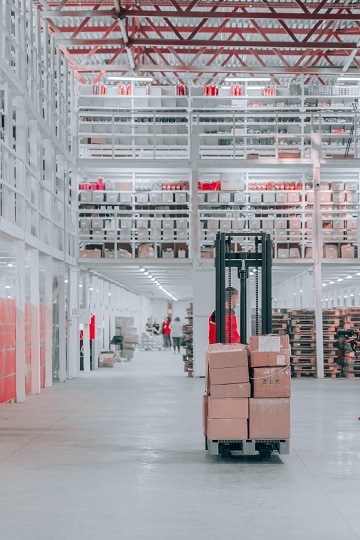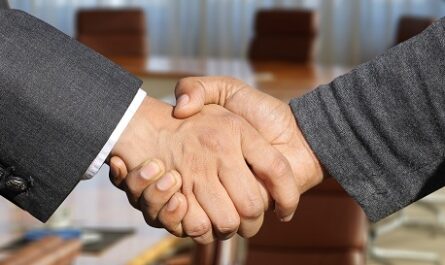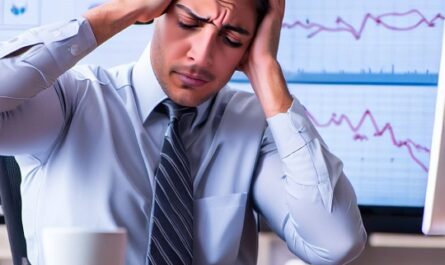Here, I’ll tell you how to reduce on inventory.
You already know how important it is to keep enough inventory on hand to meet sales or production needs.
Even though this is the case, you can’t store too much inventory because it will hurt your business.
And if you already have too much, you need to get it down to, if not the ideal level, at least as close as you can as soon as possible.
How do you do it?
Let’s look into this a little more.
Before we get into the details of this discussion, please join my scmguide telegram channel to learn more about supply chain management.
Table of Contents
What is inventory
First of all, you should know what it means to have an inventory.
We can sort inventories by what they are for or what they are made of.
In short, inventory is anything you buy, make, or store to reach your goals, whether it’s raw materials or finished goods.
Raw materials are what you’ll need to make things, of course.
For sales, finished products or finished goods that are already in inventories will be used.
Hotel rooms will be the form of inventory in the hotel business.
If you have a lot of stock, you won’t be able to spend more money.
Why?
Because you need money to buy or make things to sell, right?
So, as your stock grows, your cash on hand goes down and is turned into more inventories. Please keep these things in mind.
Is there a reason why you need to keep inventory?
To make a finished product, you’ll need the raw materials you’ll be working to.
You need a marketable product to sell, of course.
So, having an inventory is a must.
Inventory is a part of the cash-to-cash cycle.

Buying raw materials, making finished products, and then selling them for a profit all cost money.
Because of this, inventory is an important part of your cash-to-cash cycle, and the cycle wouldn’t work right without it.
Also, you’ll need inventories in case your business runs into problems you didn’t expect.
For example, you might lose the chance to make a sale if your supplier suddenly delays delivery or if there is a problem in the manufacturing department.
Your product will be slower to get to consumers.
And if they can take some of your market share, your competitors will be very happy.
This is where a type of inventory called “safety stock” will come in handy.
Exactly how much inventory levels do you need?
How much amount of inventory do you need to have to be successful?
In general, the answer is “as much as is needed.” That is the most or least it can be.
In a perfect world, you would have all the stock you need, when you need it.
It would take a long time to get everything just right at this point.
In the beginning, when you aren’t sure if your supplier can get you all of the goods on time and in good condition, you may need to keep a safety stock.
To get closer to ideal conditions, you will reduce your safety stock over time as your suppliers get better at delivering on time.
Your final product is the same as before. If your production department can’t make quality products on time, your sales team will almost certainly need you to keep more stock on hand.
What happens if you have more inventory than you need?
You don’t want to keep stock that you don’t need. You’ll just have to trust me.
If you have enough raw materials or finished goods to reach your production goals, you can feel safe.
On the other hand, the downside is big and will keep you from making the profit you were hoping for.
What’s bad about having too much inventory?
Let’s take each one in turn.
High storage costs
To keep stock on hand, you have to pay a fee.
It costs money to rent or buy warehouse space, pay employees’ salaries, and rent or buy warehouse material handling equipment.
If you wrote everything down, you would have a long list of things like energy and water costs.
More inventory costs more money to store and manage.
You might also like:
- How to Get the Most Out of Your ERP System: 8 Smart Ways
- What is Sales and Operation Planning (S&OP) and What Happens If You Don’t Do It?
Risk of expiration or obsolescence
Some products and raw materials have a date when they can no longer be used. If you don’t use it for a certain amount of time, its quality will get worse or be damaged.
The longer you keep inventory, the more likely it is that it won’t be used until it goes out of date.
Is metal or plastic a good idea? Even if something is made of metal or plastic, that doesn’t mean it is safe.
When you keep more inventory and don’t use it for a long time, metal is more likely to rust and plastic is more likely to become brittle.
You can lose things without even knowing it
You should know that having too much inventory can hide a lot of problems with how the business is run.
When you have a lot of stock, it’s hard to see where your business is going wrong.
You’ll also find it harder and harder to keep track of your inventory, which is already out of hand.
It’s also possible that you’re missing some of your stock.
When you have a lot of stock in your warehouse, it will be hard to tell if a small amount of it has gone missing.
Even if you are aware of the problem, you are more likely to ignore it because you think your stock is enough to meet your business needs.
Warehouse operations were messed up
Because there is too much inventory, there will be a greater need for storage space.
For example, if you work in a warehouse, you might have to put things where they don’t belong.

So, the space where you run your business is being used to store things, which makes it even harder for you to run your business.
Not to mention that the people who work in your warehouse may make more mistakes.
Disrupted cash flow
To keep your business going, you’ll need money to pay for all of your normal costs, like buying new stock.
If you have a lot of inventory, you will have less cash on hand and be less able to pay for your business.
You can’t pay your supplier with materials.
How to reduce inventory
Once you know how bad it is to have too much stuff, it’s clear that you want to stop doing it.
Unless, of course, you want to deal with the problems I’ve already listed.
How can we make this less?
You can try a few different things.
Improve how well you can forecast sales
Accurate sales forecasts are a must if you want to keep a healthy stock level.
If your sales forecast is accurate, you’ll be able to give your sales team the right product.
Your purchases of raw materials will also be more on point. So, you won’t have to spend money on raw materials you don’t need.
Improve stock data accuracy
It’s obvious that you’ll use the stock data to figure out how much production and material you need.
Then you’ll need good stock information.
Because if you don’t know what to make or buy, you’ll end up with a lot of extra stuff you don’t use.
Improve supplier product quality
When working with suppliers whose products are often damaged or of low quality, safety stock is a must.
If you don’t want something to go wrong, it’s fine to have a little extra stock in case it does.

As much as possible, you should try to store as few emergency supplies as possible, since keeping more than you need makes your stock bigger than it should be.
By working with your suppliers to improve the quality of their products, you can rest easy knowing that the products they ship are of high quality and you need less safety stock.
Improve your supplier delivery accuracy
Like the last point, if your suppliers are often late with their deliveries, you will need a safety stock.
You should also worry about the quality of the things they ship, in addition to the fact that they might be late.
What’s the point of getting a product on time that doesn’t match what you bought?
Increase the accuracy of your suppliers’ deliveries, both in terms of when they deliver and what they deliver. This will lower your safety stock needs and lower your overall inventory level.
You might also like:
Improve operational quality
Most of the time, well-run operations lead to high-quality products.
There won’t be as many flaws in the finished product or the raw materials.
So, you don’t have to keep as much stock on hand in case something goes wrong with your operations.
Find a supplier you can count on
The first step to getting high-quality products and on-time delivery is to choose the right supplier.
Set minimum standards that suppliers must meet before they can work with you. Each possible supplier should be carefully looked over to make sure they meet these needs.

Why should you be careful about who you choose as a supplier?
This goes along with the last point because the amount of safety stock you need to keep will depend on the quality of the goods they supply and how well they deliver them.
When your sources aren’t reliable, you need to have a safety stock.
Use local suppliers
The lead time will be longer for suppliers from outside the country.
You’ll have to deal with problems with quality and late shipments for a longer time.
Items that are brought in from other countries will, of course, need a bigger safety stock.
Local sourcing is a good way to cut down on the amount of stock you have to carry. Yes, as long as the product is just as good as the one that was brought in from another country.
Red tag activity
Exists a situation in which you already have a lot of stock?
One choice is to do things with a red tag.
What does a red tag activity mean?
You, your team, and maybe even the top executives of the company need to check out what’s in your warehouse.
Find out what’s in the storage area, even if it’s not being used right now.
No matter if it’s still being used or not, how long will it be used? It might be about to run out by the time you don’t need it anymore.
Everything that hasn’t been used in the last few months should have a red tag.
Get rid of things you don’t need or sell them for less than you bought them for, if you can.
If you do this task, you’ll only keep the things you really need.
You’ll be able to put other things in the space that’s left over.
Now that you have enough space to work, your operations will also go more smoothly.
If you’ve tried everything else, this is it. Of course, you shouldn’t try to stock up on things you don’t need.
And you will have to do that once you finish this red-tag task.
Conclusion
A key part of running a business is keeping the amount of inventory low.
If you have too much inventory, you won’t be able to run your business as usual.
Keeping a huge amount of inventory would also be very expensive. This is something you should definitely not do.
Keeping a strong cash flow and low inventory levels can be done in a number of ways, some of which are listed above. I hope this helps!
Join the scmguide telegram channel to learn more about supply chain management and share this article with your coworkers. You don’t have to give credit for any of the content on this site, so you can use it for anything you want, even to make money.

 by
by 


